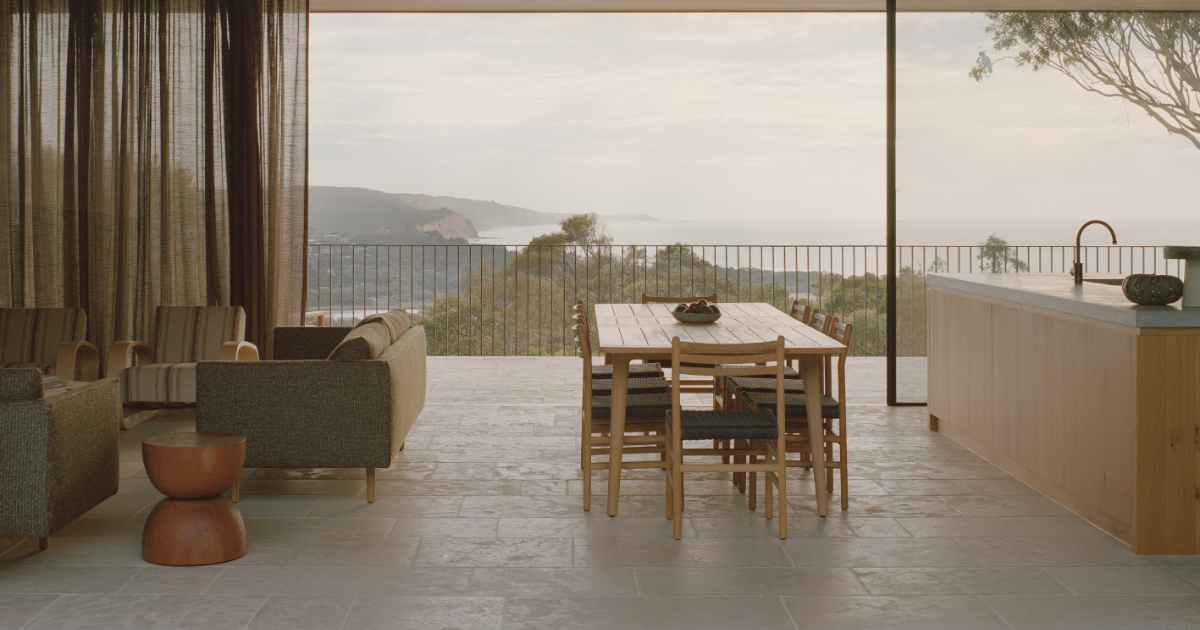Two local design projects vie for top honours at 2024 Dulux Colour Awards

Sibling Architecture has been shortlisted in the 2024 Dulux Colour Awards for their transformation of the Art and Music Hub at Aireys Inlet Primary School. Photo: TOPE ADESINA. TOP: Interior Designer Amelda Wilde transformed her residence in Newtown into a striking contemporary home. Photo: CRICKET SALEH
THE Aireys Inlet Primary School and a private residence in Newtown and have been named finalists in the prestigious 2024 Dulux Colour Awards, standing out among a record 527 entries across various categories.
This year, the competition saw 83 projects shortlisted, reflecting an array of innovative design solutions that utilise colour to enhance architectural and interior spaces.

Interior Designer Amelda Wilde is renowned for her thoughtful approach to blending historical architecture with modern design, was shortlisted for transforming the Von Leach Residence in Newtown into a striking, contemporary home.
Ms Wilde said she was thrilled with the nomination.

“It’s always lovely to be shortlisted and recognised for awards that celebrate Australian local design,” Ms Wilde said.
The design features a unique mix of old and new elements, such as a bold archway that connects the building’s storied past with its vibrant future.

Similarly, Sibling Architecture, with their history of accolade-worthy projects including last year’s win at the Dulux Awards, took a holistic approach to the Art and Music Hub at Aireys Inlet Primary School.

Their design harmoniously integrated the building into its coastal bush setting, employing a palette that includes bush greens and soft oranges, reflecting the school’s focus on environmental appreciation.

Sibling Architecture director Nicholas Braun shared his thoughts on the project’s nomination.
“It’s an honour to be shortlisted. We are always keen to use colour, and this project was all about working with the natural environment.”

“The best part was getting to work with the school community.” This year marks the 38th annual Dulux Colour Awards, organised by a panel of five design industry professionals from Australia and New Zealand.
The awards are known for recognising exceptional and innovative use of colour in the built environment.

With categories spanning from commercial and residential interiors to multi-residential exteriors and student work, the awards showcase the best in colour application across a range of architectural styles.

Dulux colour manager Andrea Lucena-Orr said the introduction of a new category this year, Temporary or Installation Design, celebrated the creative use of colour in non-permanent projects.

“Expanding our program to award innovative colour use in non- permanent projects, such as exhibition spaces, installations and display suites, acknowledges the level of creativity that is being applied in this sector,” she said.
The finalists this year were particularly noted for their sophisticated use of colour to create inviting and functional spaces.

From hospitality venues that use colour psychology to attra
ct customers, to educational spaces where colour aids in learning and navigation, Lucena-Orr said the impact of thoughtful colour integration was evident.
“This year, biophilia – the affinity of humans with the natural world – is a strong theme, with earthy colours playing a dominant role in interiors,” she said.

“Olive greens, warm greys, muted taupes and dusky blues are coming into their own across several categories.”

The winners of the 38th Dulux Colour Awards will be announced during an exclusive event at the Sydney Opera House Bennelong, as part of Vivid Sydney on Wednesday,29 May.

















